Most Lycian heritage sites are located on the southern coast of Turkye between Fethiye and Antalya.
I've travelled a bit around Turkye, from Istanbul to the springs at Pamukkale, the blue Mediterranean, the Cappadocian hinterland. The country is rich in natural beauty, history and culture.
But one of the most striking sights are the ancient Lycian funeral monuments that are strewn around the Lycian country.
The Lycians predating the Greek traditions in this part of the world, had a belief that the strength of the rocks all around them represented the strength of the gods. The height of their culture stretched from 800 BC onwards and they might have been nomadic settlers coming from southern Asia Minor.
Coming back to the belief the Lycians had in the power of the rocks, they used the soft limestone to build an array of funeral monuments in the Anatolian region of Turkye.
You can find pillar tombs, sarcophagi, rock-cut tombs and monumental tombs. A big difference with Greek traditions is that the Lycian people made their living amongst the tombs whereas the Greeks positioned their graves on the outskirts of inhabited sites.
Some examples,
Rock-cut tombs
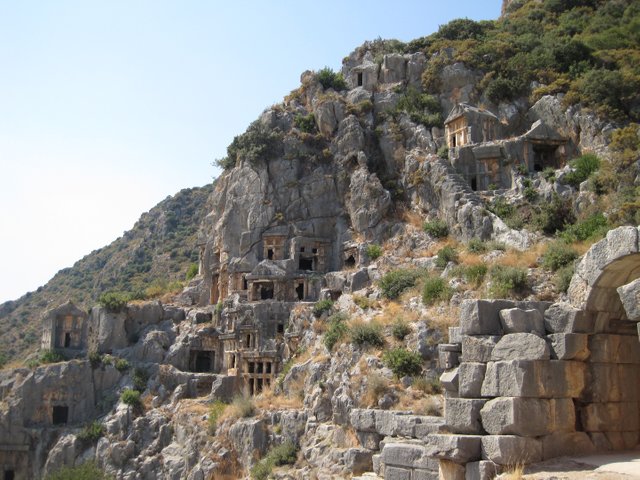
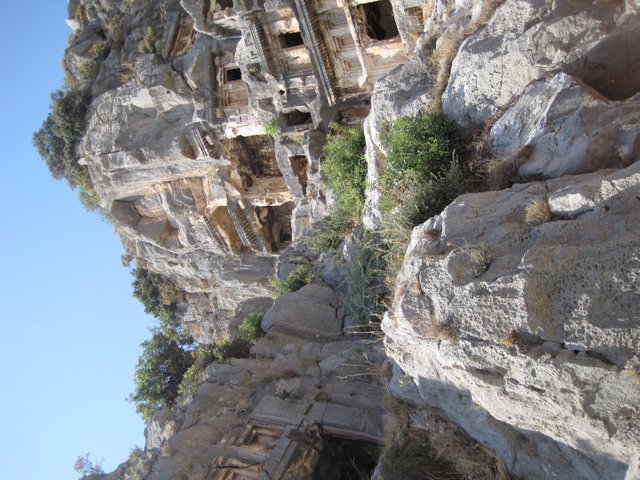
Usually build in cliff walls, the graves usually represent ancient Lycian houses, consisting of 2 or 3 floors, the actual wood of the houses is sometimes carved in the rock. Often whole families are buried inside, the inside walls decorated with paintings, offerings to the gods layed around, entrance were sealed with a sliding door.
Pillar tombs
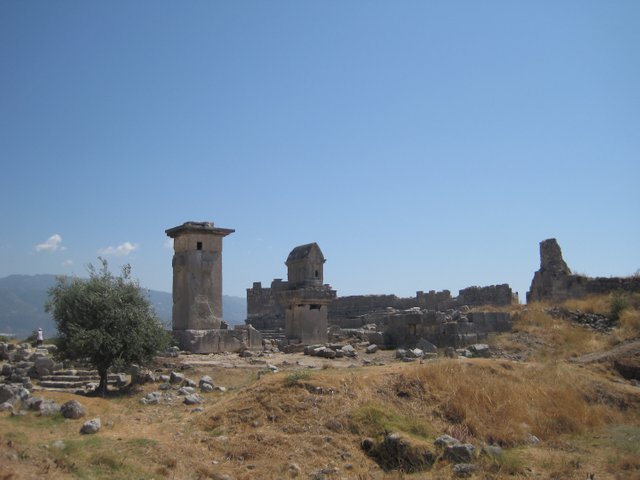
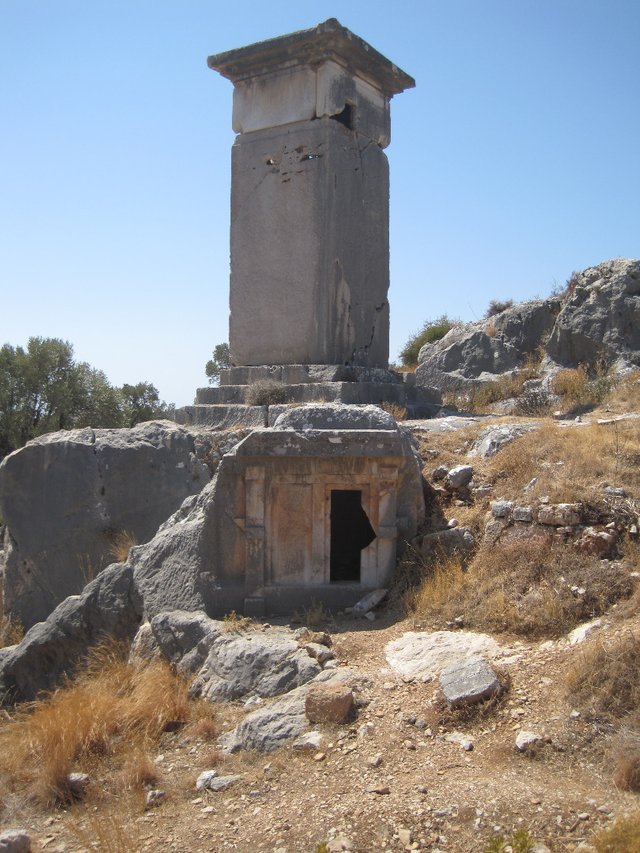
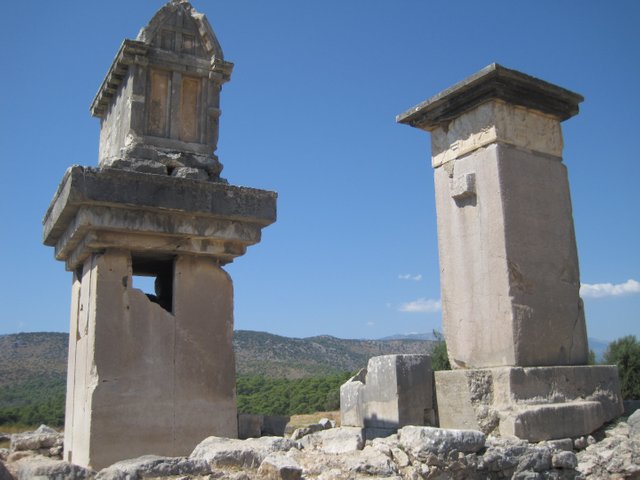
These tombs are the oldest form of tombs, kept for important people like kings. Monolithic in construction, these tombs are uncommon.
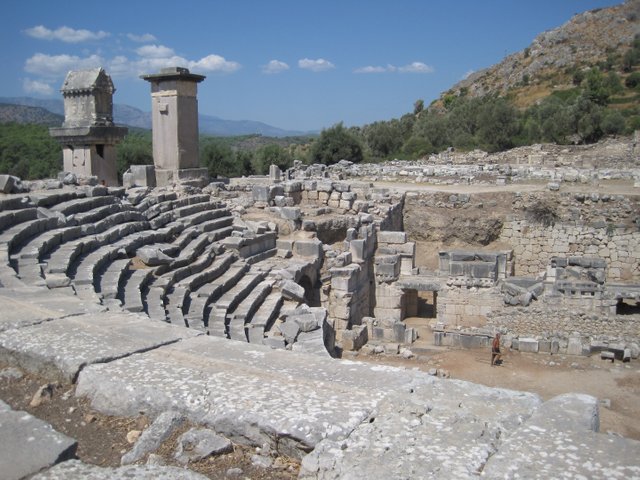
Seen here next to an antique theater, pictures taken in the Antalya province.
Sarcophagi
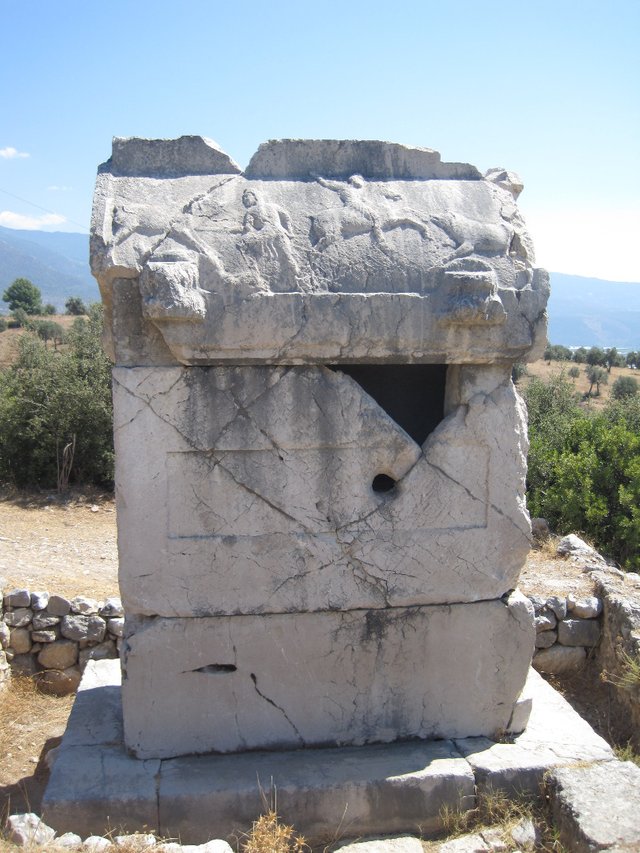
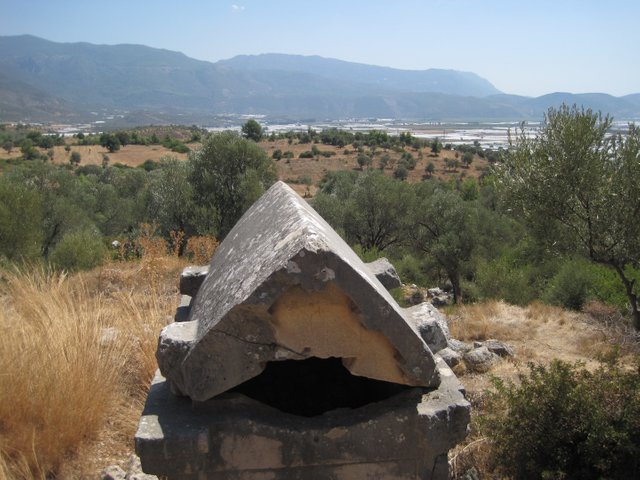
Common among Lycian graves, very distinctive of their great size and sometimes descendants and slaves were burried in a room lying under the sarcophagus. Consisting of 3 parts a base, a burial chamber and a crested lid.
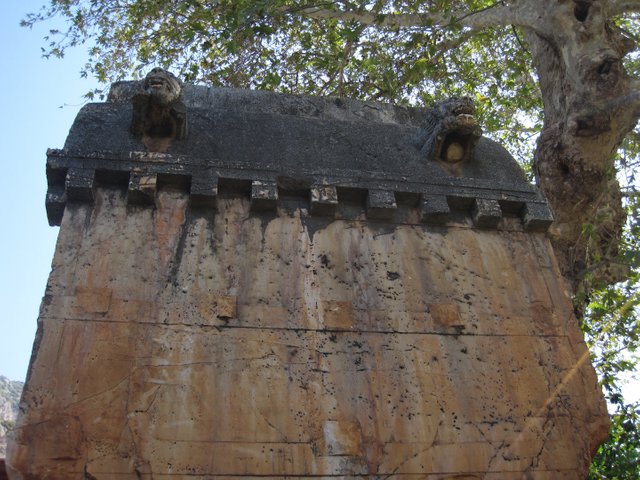
notice the lionheads
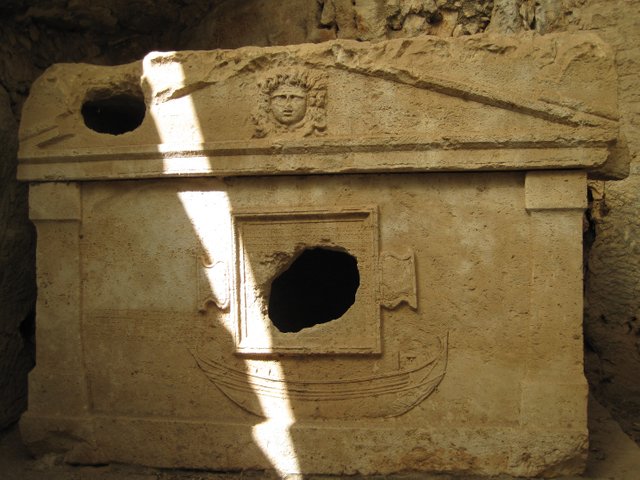
sarcophagus
Monumental tombs,
Only a few examples are preserved, some are build in the form of a small temple, cfr Greek and Roman temples, kept for the very rich.
Unfortunatly i haven't got an example but there is one in the British museum,
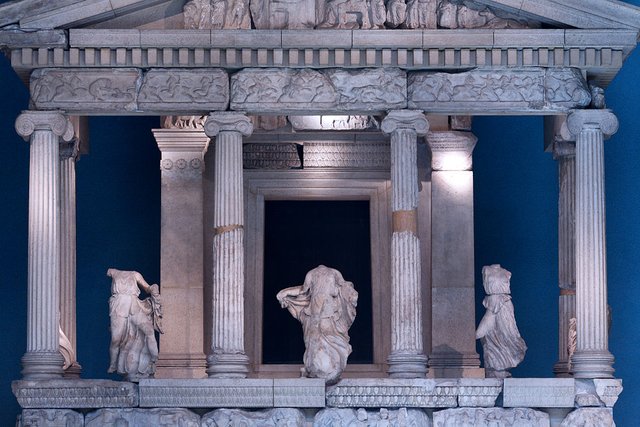
the Nereid monument from Xanthos.(Wikipicture)
Hoping that this might be a starting point for further exploration into this ancient world, thanks for reading.
With a link to what is an interesting route to follow along Lycian Turkye!
http://cultureroutesinturkey.com/the-lycian-way/
More on Lycian graves and culture,
http://whc.unesco.org/en/tentativelists/5408/
http://www.lycianturkey.com/lycian_tombs.htm
https://en.wikipedia.org/wiki/Lycians
https://en.wikipedia.org/wiki/Nereid_Monument
Nice post @nin0000
Downvoting a post can decrease pending rewards and make it less visible. Common reasons:
Submit
Thanks Reenamathew!
Downvoting a post can decrease pending rewards and make it less visible. Common reasons:
Submit
Welcome :)
Downvoting a post can decrease pending rewards and make it less visible. Common reasons:
Submit